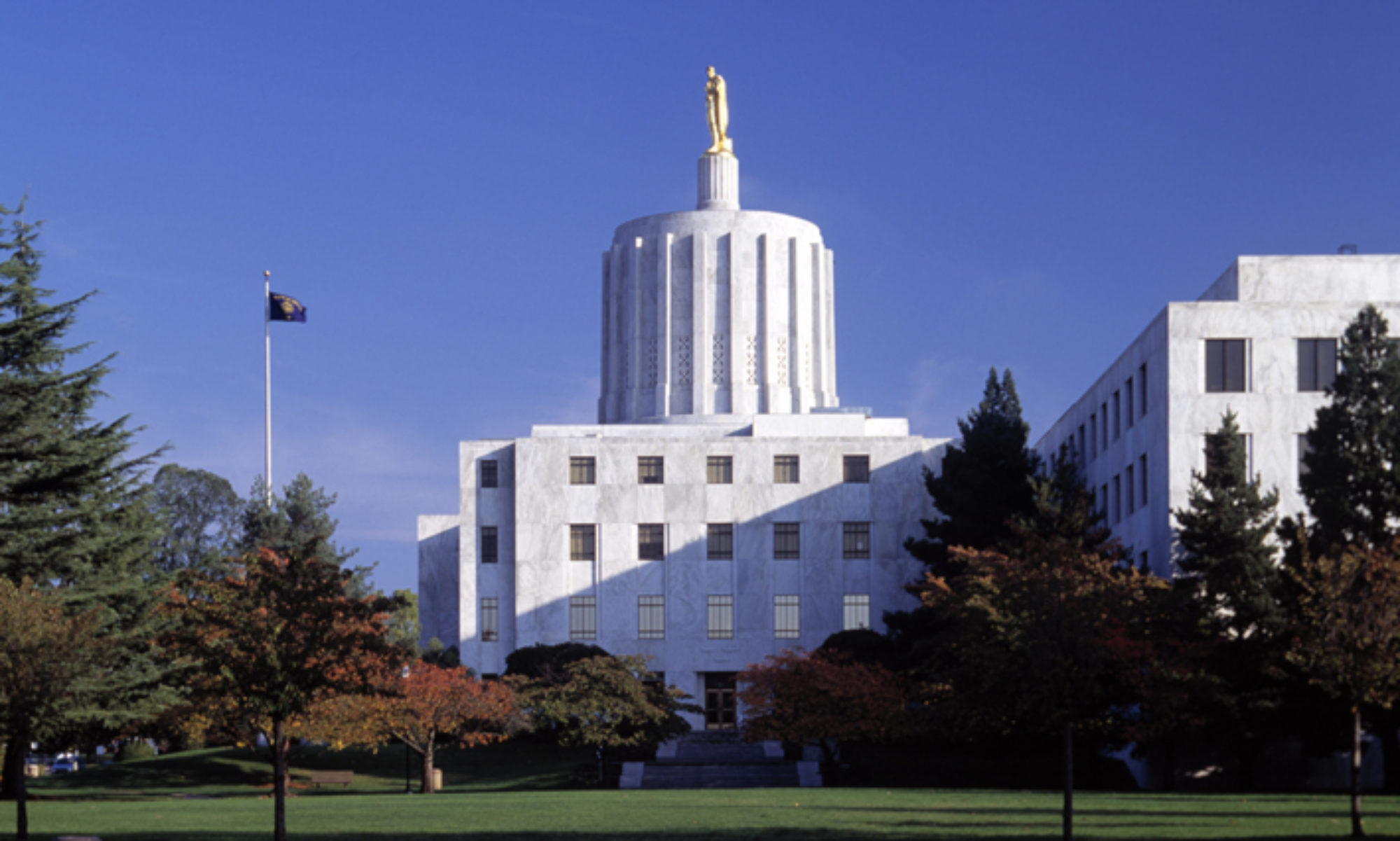Chapter 9: Cameras in the Courtroom
In 1999, the Oregon Supreme Court adopted a number of revisions to the state’s Uniform Trial Court Rules that refined the procedures for allowing cameras, both video and still, and audio recording devices to be used by the media in courtrooms. The adoption and revision of Uniform Trial Court Rule 3.180, followed nearly a decade of experimentation with cameras under a temporary Canon of Ethics, the establishment of a court rule and evolutionary revisions recommended by the Oregon Bar-Press-Broadcasters Council.
The text of Uniform Trial Court Rule 3.180 follows:
MEDIA OR OTHER PUBLIC ACCESS COVERAGE OF COURT EVENTS
- Courtrooms. Upon request or on the court’s own motion, after notice to all parties, public access coverage shall be allowed in any courtroom, except as provided under this rule.
- There shall be no public access coverage of the following:
- Proceedings in chambers.
- Any notes or conversations intended to be private including, but not limited to, counsel and judges at the bench and conferences involving counsel and their clients.
- Dissolution, juvenile, paternity, adoption, custody, visitation, support, mental commitment, trade secrets, and abuse, restraining and stalking order proceedings.
- At a victim’s request, sex offense proceedings.
- Voir dire.
- Any juror anywhere during the course of the trial in which he or she sits.
- Recesses.
- Limitations on Denial of Public Access Coverage in Courtrooms. A judge may deny a request for or terminate public access coverage only if the judge makes findings of fact on the record setting forth substantial reasons for the denial. The judge may prohibit public access coverage if there is a reasonable likelihood of any of the following:
- The public access coverage would interfere with the rights of the parties to a fair trial or would affect the presentation of evidence or outcome of the trial.
- Any cost or increased burden resulting from the public access coverage would interfere with the efficient administration of justice.
- A judge may summarily prohibit public access coverage of a particular witness only if the judge finds on the record that public access coverage would endanger the welfare of the witness or materially hamper the witness’ testimony.
- Areas Outside of Courtrooms. The presiding judge may allow public access coverage in any area outside the courtroom that is on the courthouse premises and under the control and supervision of the court. Courts are encouraged to designate an area or areas outside the courtroom that is on the courthouse premises for public access coverage. For areas subject to this subsection, each judicial district, by SLR, may establish, for any court location, procedures for obtaining permission for public access coverage that differ from this subsection or may designate locations where public access coverage is allowed or prohibited. SLR 3.181 is reserved for SLR adopted under this subsection.
- Public Access Coverage Defined. As used in this rule:
- “Public access coverage” means coverage by means of any public access coverage equipment.
- “Public access coverage equipment” means any of the following in the possession of persons other than the court or the court’s staff: television equipment; still photography equipment; audio, video, or other electronic recording equipment.
- Equipment and Personnel for Public Access Coverage. The court may limit the location of public access coverage equipment. One pool video camera and one pool still camera and one pool tape recorder shall be permitted.
- No public access coverage device shall be operated by more than one person.
- No person shall use public access coverage equipment that interferes or distracts from proceedings in the courtroom.
- The video camera must be mounted on a tripod or other device or installed in the courtroom. The tripod or other device must not be moved while the proceedings are in session. Video equipment must be screened where practicable or located and operated as directed by the court.
- No artificial lighting devices of any kind shall be allowed.
- Any pooling arrangement required by limitations on equipment and personnel imposed by the judge or by this rule must be the sole responsibility of the persons seeking public access coverage, without calling upon the judge to mediate any disputes involved therein. In the absence of agreement on such issues by persons seeking public access coverage, the judge may exclude any or all public access coverage.
- Upon request, any person engaging in public access coverage of a court event or in a courtroom, courthouse, its premises, or environs under the control and supervision of the court must provide to the court, without expense, or to any other person, if the requestor pays actual copying expense, a copy of any public access coverage the person performed.
- A judge may impose other restrictions or limitations necessary to preserve the solemnity, decorum, and dignity of the court and to protect the parties, witnesses, and jurors. A judge may terminate any or all public access coverage at any point upon finding, based on substantial reasons in the record, that this UTCR or other rules imposed by the judge have been violated.
- Nothing in this rule is intended to limit the court’s contempt powers.
- Nothing in this rule shall alter or affect the rules of the Supreme Court promulgated under “Video-Trial Project No. 88-38.” Under that project, the audio-video coverage constitutes the entire record. In all other courts, the record shall be preserved with court reporters or audiotape. Restrictions on releasing audio-video coverage in courts participating in the Video-Trial Project shall be set forth in separate rules.
NOTE: Uniform Trial Court Rule 3.180 was adopted by the entire Oregon Supreme Court, and any changes to the rule will be made only with the consent of the Supreme Court.
|
|
|
| previous | next |
